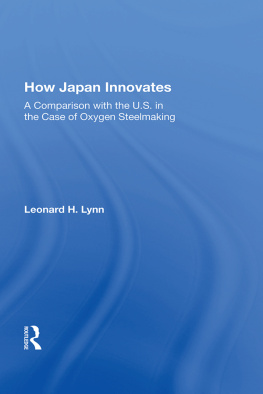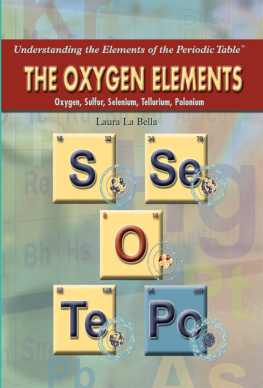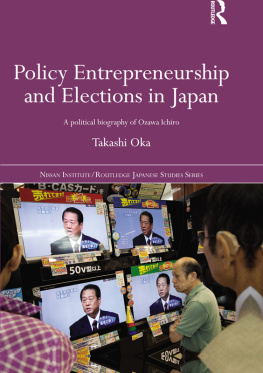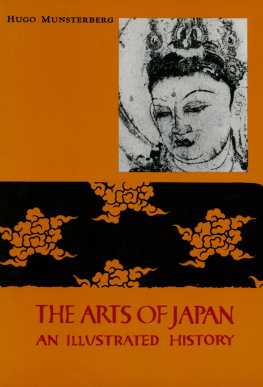How Japan Innovates
Westview Replica Editions
The concept of Westview Replica Editions is a response to the continuing crisis in academic and informational publishing. Library budgets for books have been severely curtailed. Ever larger portions of general library budgets are being diverted from the purchase of books and used for data banks, computers, micro-media, and other methods of information retrieval. Interlibrary loan structures further reduce the edition sizes required to satisfy the needs of the scholarly community. Economic pressures (particularly inflation and high interest rates) on the university presses and the few private scholarly publishing companies have severely limited the capacity of the industry to properly serve the academic and research communities. As a result, many manuscripts dealing with important subjects, often representing the highest level of scholarship, are no longer economically viable publishing projectsor, if accepted for publication, are typically subject to lead times ranging from one to three years.
Westview Replica Editions are our practical solution to the problem. We accept a manuscript in camera-ready form, typed according to our specifications, and move it immediately into the production process. As always, the selection criteria include the importance of the subject, the works contribution to scholarship, and its insight, originality of thought, and excellence of exposition. The responsibility for editing and proofreading lies with the author or sponsoring institution. We prepare chapter headings and display pages, file for copyright, and obtain Library of Congress Cataloging in Publication Data. A detailed manual contains simple instructions for preparing the final typescript, and our editorial staff is always available to answer questions.
The end result is a book printed on acid-free paper and bound in sturdy library-quality softcovers. We manufacture these books ourselves using equipment that does not require a lengthy make- ready process and that allows us to publish first editions of 300 to 600 copies and to reprint even smaller quantities as needed. Thus, we can produce Replica Editions quickly and can keep even very specialized books in print as long as there is a demand for them.
About the Book and Author
How Japan Innovates: A Comparison with the U.S. in the Case of Oxygen Steelmaking
Leonard H. Lynn
The speed with which the Japanese have adopted new industrial technology has been a major factor in their economic success, raising the question of how they have been able to carry out technological change so quickly and so smoothly, often outstripping their U.S. competitors.
How Japan Innovates examines this question in depth by comparing the introduction of a major new industrial processuse of the basic oxygen furnace (BOF)in Japan and in the United States. Dr. Lynns fieldwork in both U.S. and Japanese steel firms led to his conclusion that, contrary to implications that can be drawn from several recent studies, internal decision-making patterns are not the key to success in the case of the Japanese steel industry. Rather, it is the nature of interorganizational relationsamong steel firms, trading companies, and the governmentthat has contributed most to profitable innovation. Despite the fact that U.S. industry is favored by a rich infrastructure, Japan apparently is better structured to efficiently exploit a major new technology.
Dr. Leonard Lynn is assistant professor in the Department of Social Science at Carnegie-Mellon University. He has conducted extensive research in Japan on the Japanese steel industry and Japanese social structure, most recently as a Fulbright Fellow and Social Science Research Council Research Fellow. His article, Iron and Steel Industry in Japan, is forthcoming in the Encyclopedia of Japan (Kodansha).
For Kuniko,
who now owes me a book
First published 1982 by Westview Press
Published 2018 by Routledge
52 Vanderbilt Avenue, New York, NY 10017
2 Park Square, Milton Park, Abingdon, Oxon OX14 4RN
Routledge is an imprint of the Taylor & Francis Group, an informa business
Copyright 1982 by Taylor & Francis
All rights reserved. No part of this book may be reprinted or reproduced or utilised in any form or by any electronic, mechanical, or other means, now known or hereafter invented, including photocopying and recording, or in any information storage or retrieval system, without permission in writing from the publishers.
Notice:
Product or corporate names may be trademarks or registered trademarks, and are used only for identification and explanation without intent to infringe.
Library of Congress Cataloging in Publication Data
Lynn, Leonard H.
How Japan innovates.
(A Westview replica edition)
Bibliography: p.
Includes index.
1. Technological innovationsJapan. 2. Technological innovationsUnited
States. 3. SteelMetallurgyOxygen processes. I. Title.
T173.8.L96 338.7669142 81-21949
ISBN 0-86531-900-6 AACR2
ISBN 13: 978-0-367-02005-7 (hbk)
We are now being deluged by writings on what we can learn from the Japanese. The Japanese secret is a style of management that allows the firm to draw more fully on the abilities of its employees according to Ouchi in Theory Z and Pascale and Athos in The Art of Japanese Management . It is well-managed coordination from the top combined with an almost compulsive pursuit of knowlege according to Vogel in Japan as Number 1: Lessons for America . Part of it maylie in the use of QC circles according to Robert Cole in Work, Mobility and Participation . Throughout the 1970s, commentators spoke of Japan, Incorporated. A recent piece in The Wail Street Journal turns this around to talk of Japans minimalist government.
The scale of the problem of understanding Japans industrial success (and what is taken by some to be Americas failure) is so large and our knowledge base is so small that our interpretations tend to sound like the six blind men describing the elephant. This book combines a few of these perspectives in examining a major Japanese success -- the introduction of an epoch-making steelmaking technology.
I am indebted to scores of people who helped me in researching and writing this study. Robert Cole was chairman of the dissertation committee that oversaw the research. Bob was a phenomenal adviser: generous with his many contacts in Japan, supportive in general, but blunt in his criticisms. The other members of my committee, Gary Saxonhouse, Gayl Ness and Martin Whyte at the University of Michigan were also unusually generous with their time and perceptive in their comments. Some seventy members of the U.S. and Japanese steel industries were patient and cooperative through long interviews. Many of these people are mentioned by name in the study, others could not be.
This research would not have been possible without the financial support of the U.S. Fulbright Commission, the Social Science Research Council and the University of Michigan Rackham Graduate School. Nor could it have been done without the emotional and intellectual support of my wife, Kuniko.
1
Introduction
The transistor was invented in the United States, major new steelmaking technologies such as continuous casting came from Europe and most new automotive technology has been developed in the U.S. or Europe. And yet, the Japanese have exploited these technologies so effectively that U.S. and European firms now find it difficult to compete with Japanese electronic products, steel and automobiles. Indeed, Ohkawa and Rosovsky argue that a unique social capacity to adopt and improve foreign technology explains much of Japans economic success.







